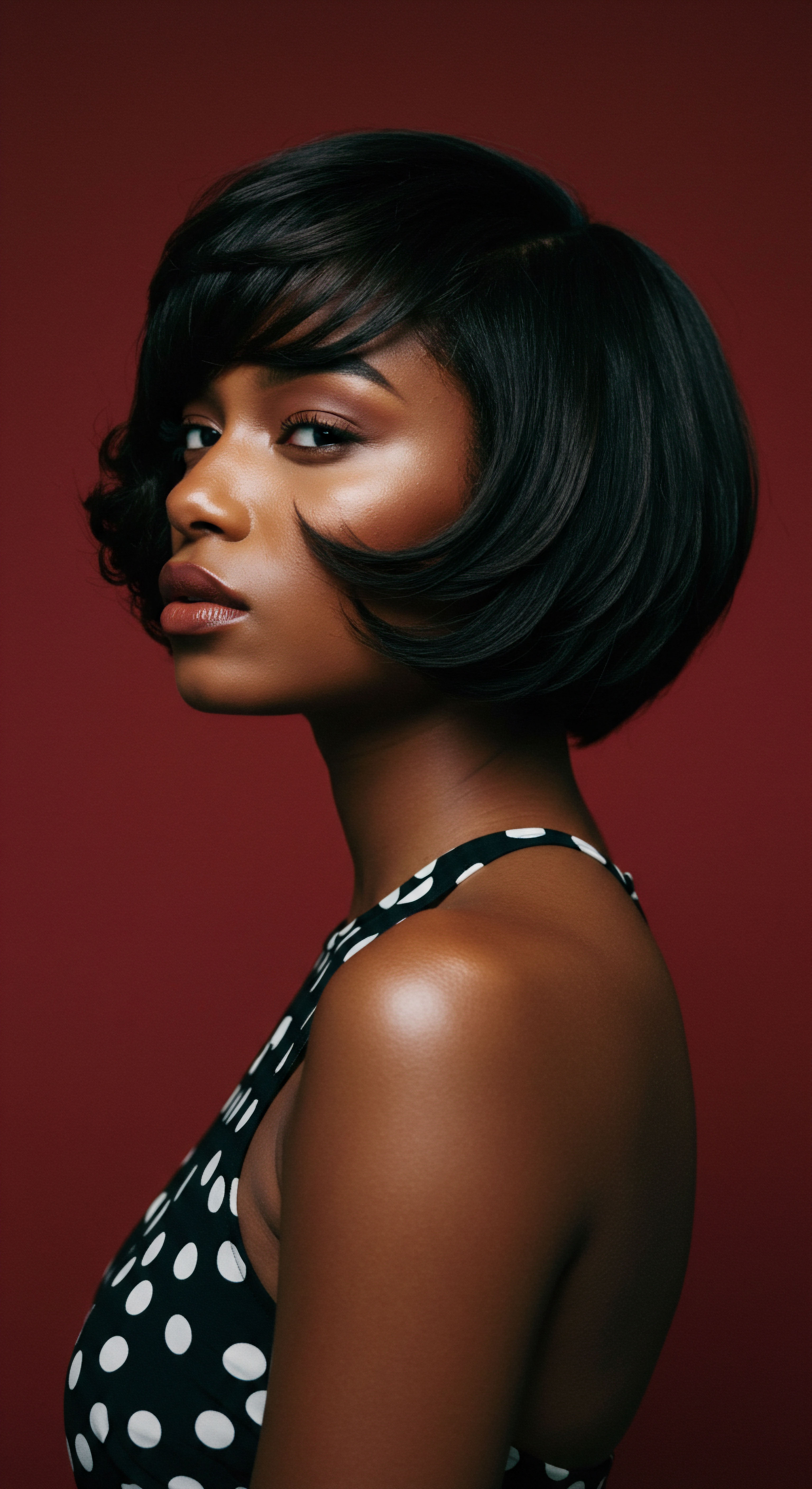
Roots
The quiet hours of the night hold a profound sway over the vitality of textured hair. While the sun descends and the world quiets, our hair, particularly those strands that coil and curve with distinct personality, can face its own set of challenges. It is a time when friction, moisture loss, and tangling can conspire to diminish the day’s careful tending.
Understanding how traditional methods offer a shield against these nightly assaults requires a journey into the very essence of textured hair and the timeless wisdom of its keepers. These aren’t merely old ways; they are practices deeply rooted in a nuanced understanding of hair’s inherent structure and its relationship with the world around it.
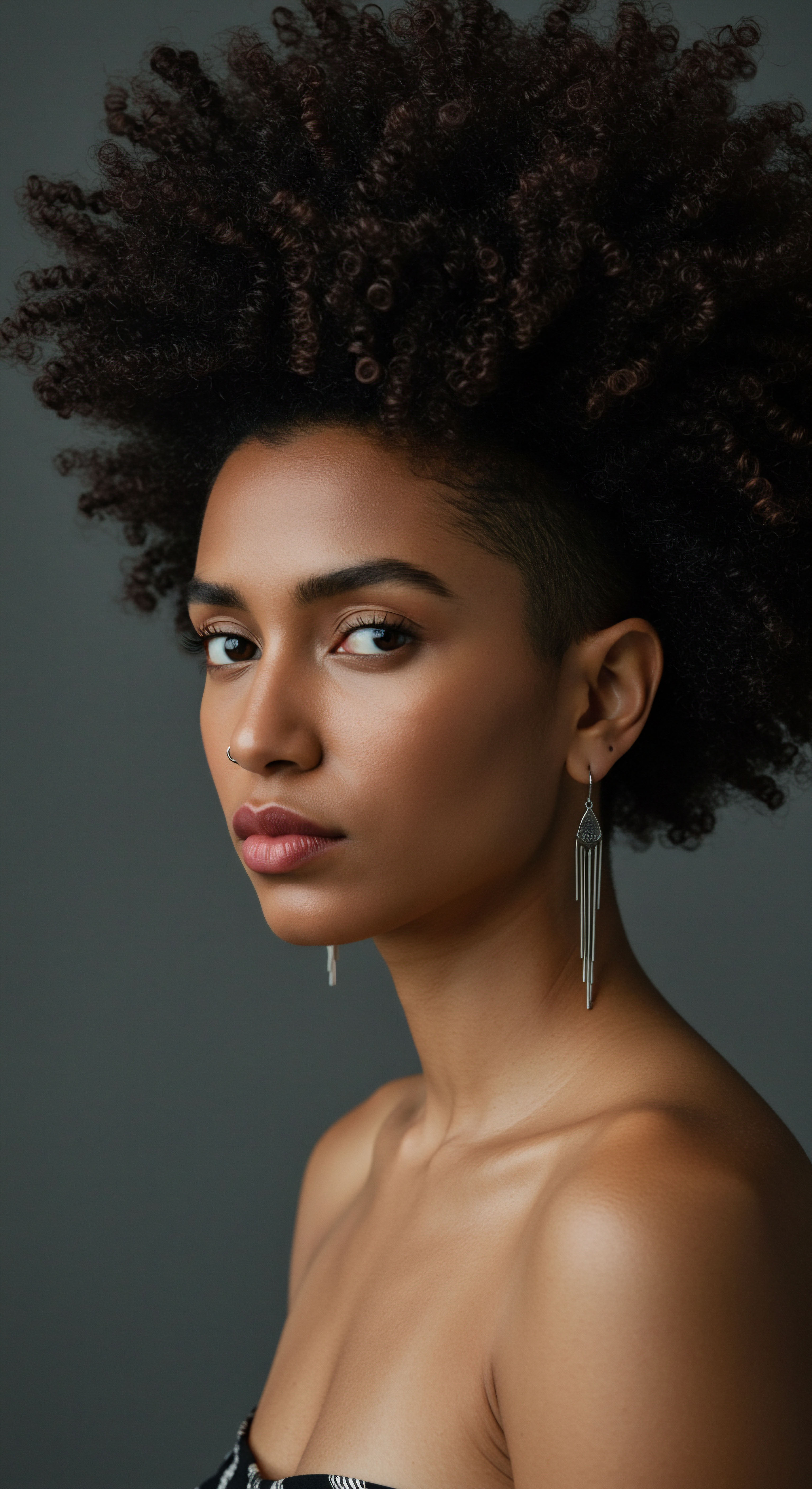
What Defines Textured Hair Anatomy?
Textured hair, encompassing a spectrum from waves to tight coils, possesses a unique anatomical blueprint that sets it apart. Unlike straight strands, which tend to be more uniform in their cylindrical shape, textured hair often exhibits an elliptical or even flat cross-section. This distinct shape, coupled with the way the hair follicle curves, dictates the curl pattern. A significant aspect of this structure is the distribution of disulfide bonds, which contribute to the hair’s strength and shape.
However, these very bends and turns also present points of vulnerability. Each curve represents a potential site for mechanical stress, making textured hair more susceptible to breakage, particularly when dry or subjected to friction. The outer layer, the cuticle, with its shingle-like scales, may not lie as flat as on straight hair, which can contribute to a rougher surface, leading to increased friction and a greater propensity for tangling. This inherent structural quality means that overnight protection is not a luxury, but a fundamental act of care to maintain the hair’s integrity.
Textured hair’s unique anatomical structure, with its varied cross-sections and curving follicles, renders it more susceptible to mechanical stress and moisture loss, making careful overnight protection a vital practice.
The porosity of textured hair also plays a central role in its nocturnal well-being. Hair porosity refers to how well your hair absorbs and retains moisture. Hair with high porosity has a more open cuticle layer, allowing moisture to enter and leave quickly. Conversely, low porosity hair has a tightly closed cuticle, making it harder for moisture to penetrate but also easier to retain once absorbed.
Many textured hair types tend to have higher porosity due to the natural lifting of the cuticle scales at each curve of the strand. This characteristic means that moisture, whether from the air or from applied products, can escape readily, leaving the hair parched by morning. The delicate balance of hydration is thus a constant consideration, particularly as hair encounters the friction of bedding materials throughout the night.
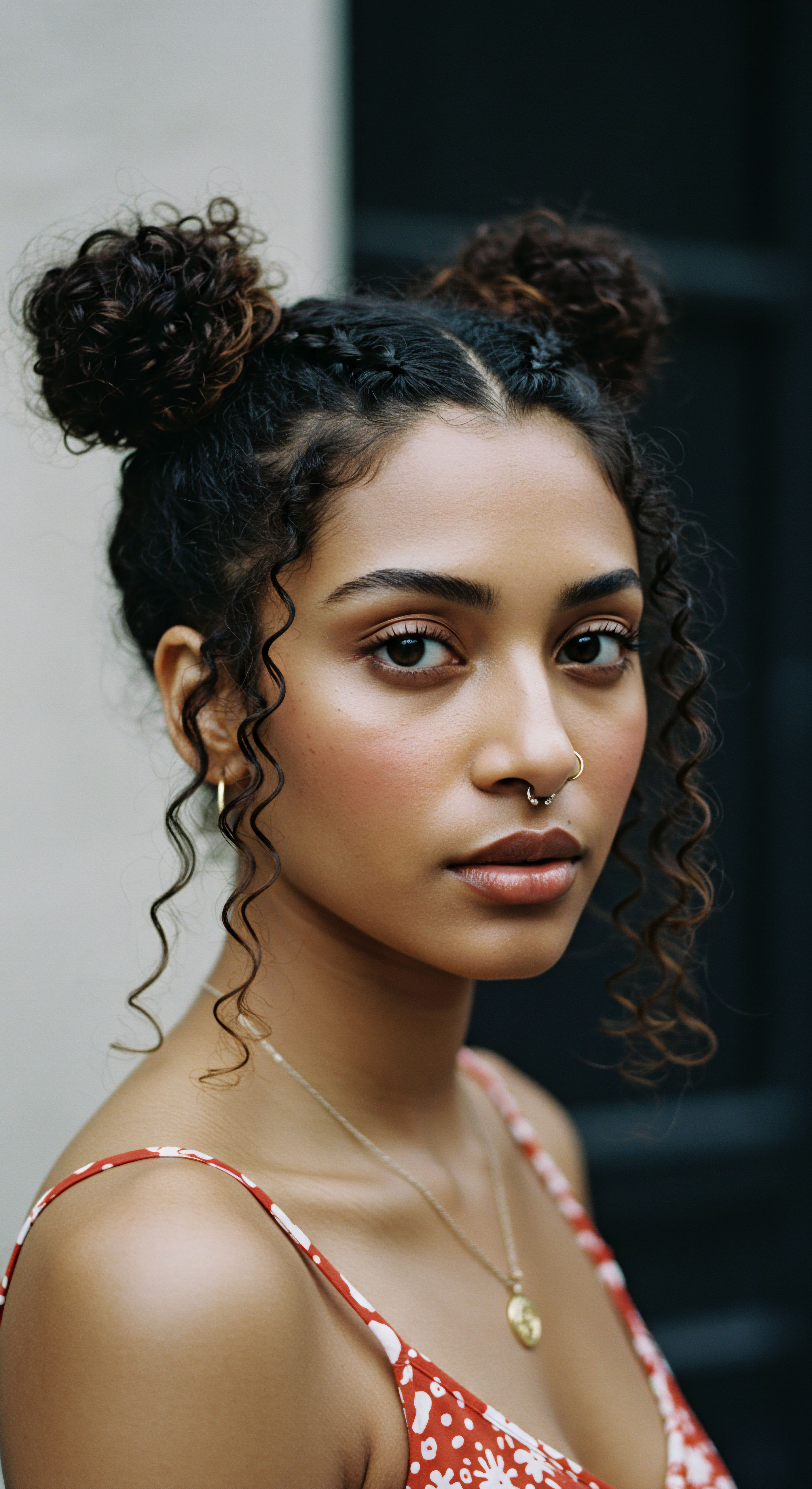
Cultural Interpretations of Hair
Across civilizations, hair has transcended its biological function, serving as a powerful visual language, a symbol of identity, status, and spiritual connection. Ancient Egyptian depictions, for instance, showcase elaborate hairstyles, wigs, and braids, all signifying social standing and religious beliefs. Archaeological discoveries from sites like Kerma in Sudan reveal intricate beadwork adorning hairstyles, suggesting a long history of hair as a canvas for creative expression.
In many African cultures, specific braid patterns identified an individual’s tribe or ethnic group, age, marital status, or social standing within a community. The Fulani people of West Africa are renowned for their intricately braided cornrows, while the Himba Tribe of Southwest Africa traditionally wear their hair in thick braids adorned with clay, which also serves a protective purpose against the harsh sun.
Hair rituals have often served as communal acts, fostering social bonds and transmitting cultural knowledge. In various traditions, mothers, sisters, and close friends would gather to braid hair, transforming the act into a space for sharing stories, gossip, and wisdom. This communal aspect reinforces the idea that hair care extends beyond individual grooming; it is a shared heritage, a practice that strengthens familial and community ties.
For young girls in some cultures, the first braiding session could signify a passage into adulthood, with more elaborate styles marking their new social status. The deep respect for hair in these traditions underscores a holistic understanding of its role, not just as a physical attribute, but as a living part of one’s being, deserving of protection and reverence.
| Civilization/Tribe Ancient Egypt |
| Key Hair Symbolism Beauty, fertility, power, divine connection, social status |
| Notable Practices Wigs, intricate braids, adornments with precious metals and jewels, use of henna, honey, almond oil. |
| Civilization/Tribe Himba Tribe (Namibia) |
| Key Hair Symbolism Age, marital status, rank, protection from elements |
| Notable Practices Applying otjize (red pigment from animal fat, resin, ochre), weaving in goat hair and hay for length, symbolic hairstyles. |
| Civilization/Tribe Native American Tribes |
| Key Hair Symbolism Tribal affiliation, spiritual beliefs, strength, wisdom, connection to nature |
| Notable Practices Long hair, braids, adornments with feathers and beads, use of yucca root as shampoo. |
| Civilization/Tribe Ancient India (Ayurveda) |
| Key Hair Symbolism Devotion, humility, balance of mind, body, spirit |
| Notable Practices Hair oiling with herbal-infused oils (amla, henna, brahmi), regular scalp massages. |

Ritual
As the day draws to a close, and the world outside softens its edges, the attention turns inward, to the quiet practices that prepare textured hair for its nightly repose. This transition from daily activity to restful sleep offers a unique opportunity for restoration and preservation. It is a time when intentional methods, often passed down through generations, can shield delicate strands from the rigors of friction and moisture depletion. These rituals are not mere routines; they are acts of gentle foresight, designed to honor the hair’s structure and ensure its continued health.
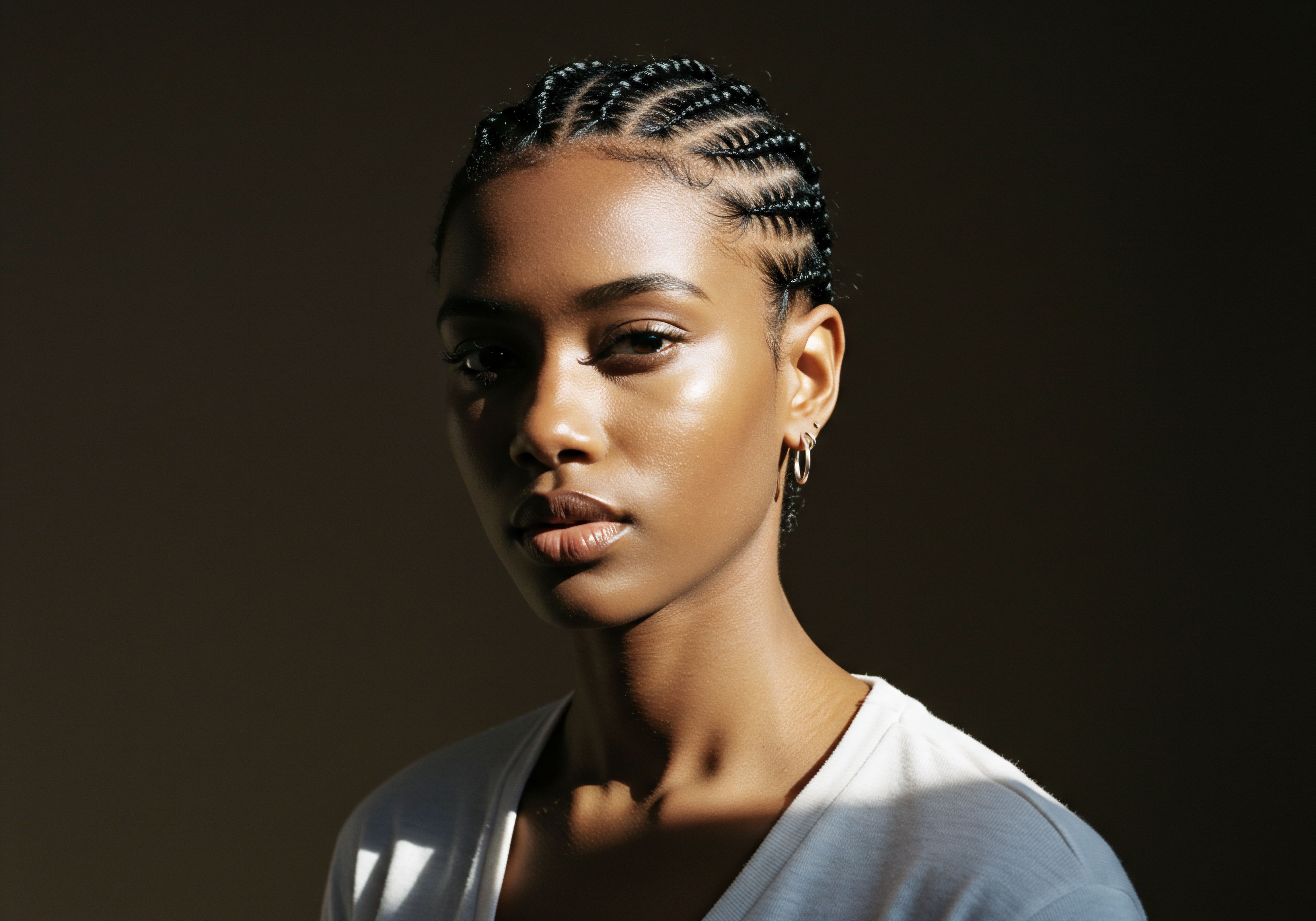
Why Do Nightly Protective Styles Matter?
The nightly hours, while seemingly peaceful, can be surprisingly taxing on textured hair. Tossing and turning against absorbent pillowcases can lead to significant friction, causing the hair’s cuticle to lift and roughen. This disturbance can result in frizz, tangles, and ultimately, breakage. Moreover, many common bedding materials, particularly cotton, are highly absorbent.
They draw moisture away from the hair, leaving it dry and brittle by morning. This moisture loss is especially detrimental for textured hair, which is already prone to dryness due to its structural characteristics.
Protective styles, therefore, serve as a physical barrier, minimizing direct contact between hair strands and bedding. They secure the hair in a contained manner, reducing the opportunity for friction-induced damage and preventing tangles from forming. These styles also help to maintain the hair’s moisture balance, creating a micro-environment that keeps hydration locked within the strands. By safeguarding the hair’s integrity overnight, these practices contribute significantly to its long-term health, shine, and manageability, allowing individuals to awaken with strands that feel nourished and ready for the day.
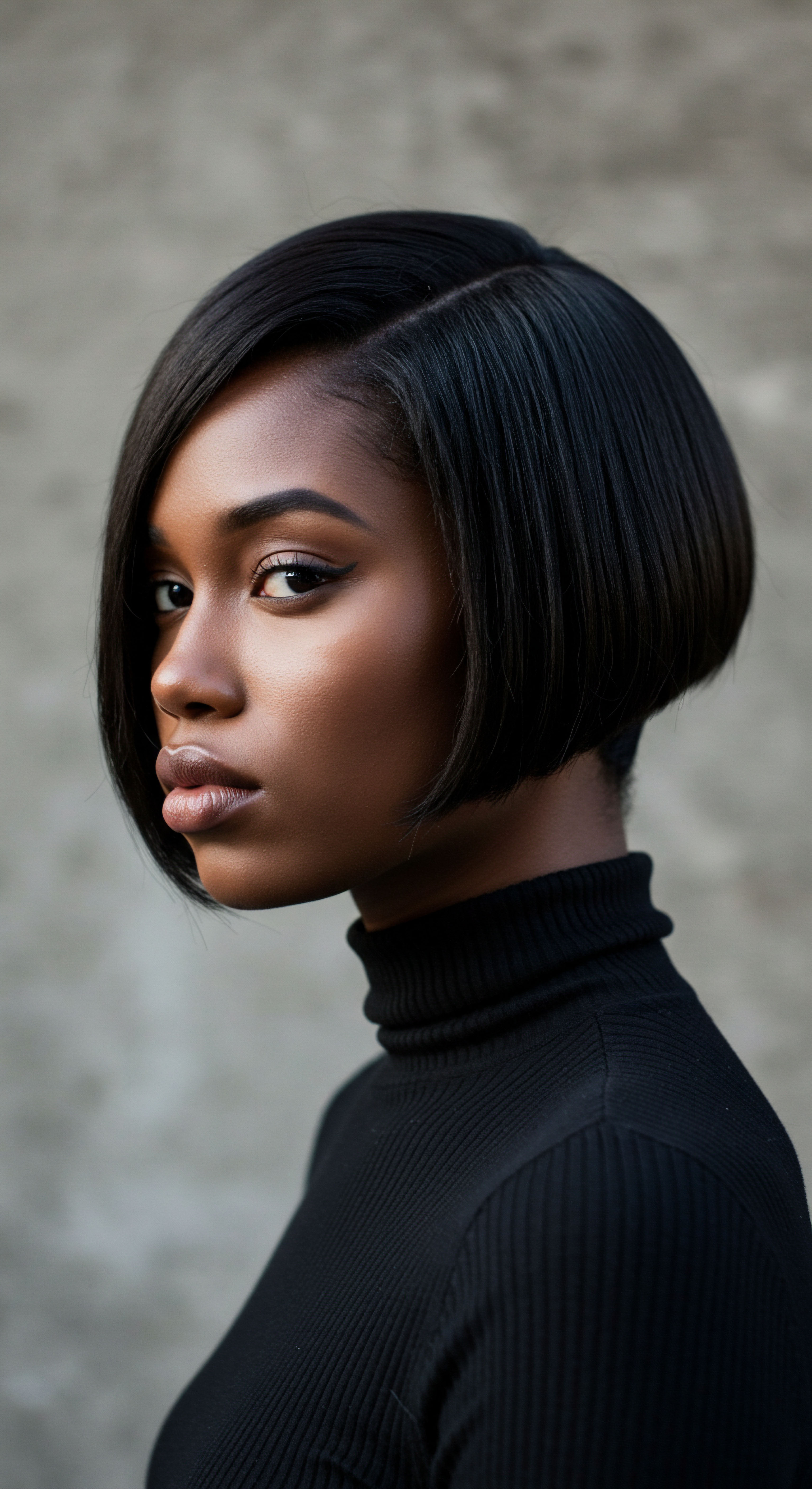
What Traditional Hairstyles Offer Overnight Protection?
For centuries, communities with textured hair have relied on a range of protective styles to safeguard their strands during sleep. These styles, often simple yet profoundly effective, work by minimizing manipulation and reducing exposure to environmental stressors.
- Braids ❉ Loose braids, whether a single large braid or multiple smaller ones, are a time-honored method. They keep hair contained, preventing tangles and friction. For natural hair, braiding before bed can also help preserve a curl pattern or create heatless waves for the next day. This method works by reducing the surface area of the hair exposed to the pillow and by keeping individual strands from rubbing against each other or external surfaces.
- Twists ❉ Similar to braids, two-strand twists or chunky twists offer excellent overnight protection. They secure the hair, reduce frizz, and can be easily undone in the morning for a defined look. Bantu knots, a style with historical roots in Southern Africa, also serve as an effective overnight protective measure, helping to preserve and define curly styles.
- Pineapple Method ❉ This contemporary method, deeply rooted in the principles of minimizing friction, involves gathering all the hair into a very high, loose ponytail at the crown of the head, resembling a pineapple. This keeps the bulk of the hair elevated and off the pillow, preventing it from being flattened or squished. It is particularly beneficial for preserving curl definition. The securing element, often a soft scrunchie, is crucial to avoid tension on the scalp.
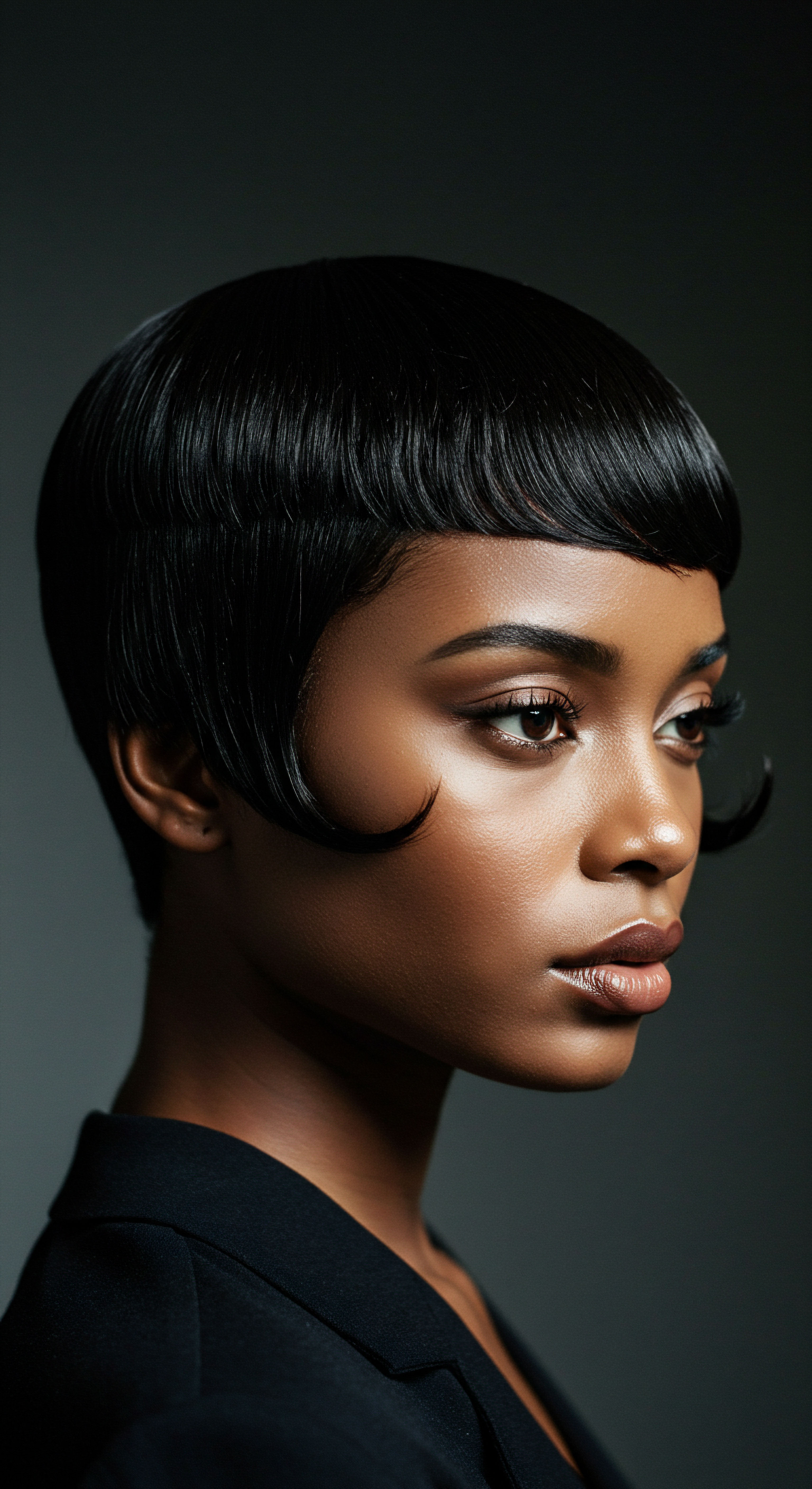
How Do Material Choices Influence Hair Health During Sleep?
The choice of materials that come into contact with hair during sleep holds significant sway over its health. Traditional wisdom, now supported by contemporary understanding, highlights the detrimental effects of rough, absorbent fabrics and champions the benefits of smooth, non-absorbent alternatives.
Cotton, a ubiquitous bedding material, possesses a rough surface at a microscopic level. As textured hair, with its natural curves and raised cuticle scales, rubs against cotton pillowcases, it experiences considerable friction. This constant rubbing can lead to the lifting of the cuticle, causing frizz, tangles, and ultimately, mechanical damage and breakage.
Beyond friction, cotton is also highly absorbent. It draws moisture, including the hair’s natural oils and any applied products, away from the strands, leaving hair dry and vulnerable.
The fundamental choice of sleep surface, particularly the pillowcase material, significantly impacts hair health by either minimizing or exacerbating friction and moisture loss.
In contrast, silk and satin have long been revered for their hair-protective qualities. These materials offer a smooth, slippery surface that allows hair to glide effortlessly, drastically reducing friction. This minimized friction helps to keep the hair cuticle flat and smooth, thereby preventing frizz, tangles, and breakage. Moreover, silk, a natural protein fiber, is far less absorbent than cotton.
It helps hair retain its natural moisture and the benefits of overnight treatments, rather than stripping them away. While satin can be made from various materials, including synthetic fibers like polyester, high-quality satin still offers a smoother surface than cotton, providing a more affordable alternative to silk.
The practice of wrapping hair in scarves or covering it with bonnets, particularly those made from silk or satin, extends this protective principle. These coverings create a personal cocoon for the hair, shielding it from direct contact with bedding and the surrounding environment. This not only reduces friction but also helps to maintain a humid microclimate around the hair, preventing moisture loss and preserving styled hair.
| Material Type Cotton |
| Key Characteristics Absorbent, rough surface at microscopic level |
| Impact on Textured Hair Causes friction, leads to frizz, tangles, breakage. Absorbs hair's natural oils and moisture, causing dryness. |
| Material Type Satin (Synthetic) |
| Key Characteristics Smooth, slippery surface (weave pattern, often polyester) |
| Impact on Textured Hair Reduces friction, helps prevent frizz and tangles. Less absorbent than cotton, but can be less breathable than silk. |
| Material Type Silk (Natural Fiber) |
| Key Characteristics Luxuriously smooth, breathable, less absorbent, natural protein fiber |
| Impact on Textured Hair Significantly reduces friction, prevents breakage, frizz, and tangles. Helps hair retain natural moisture and treatments. |
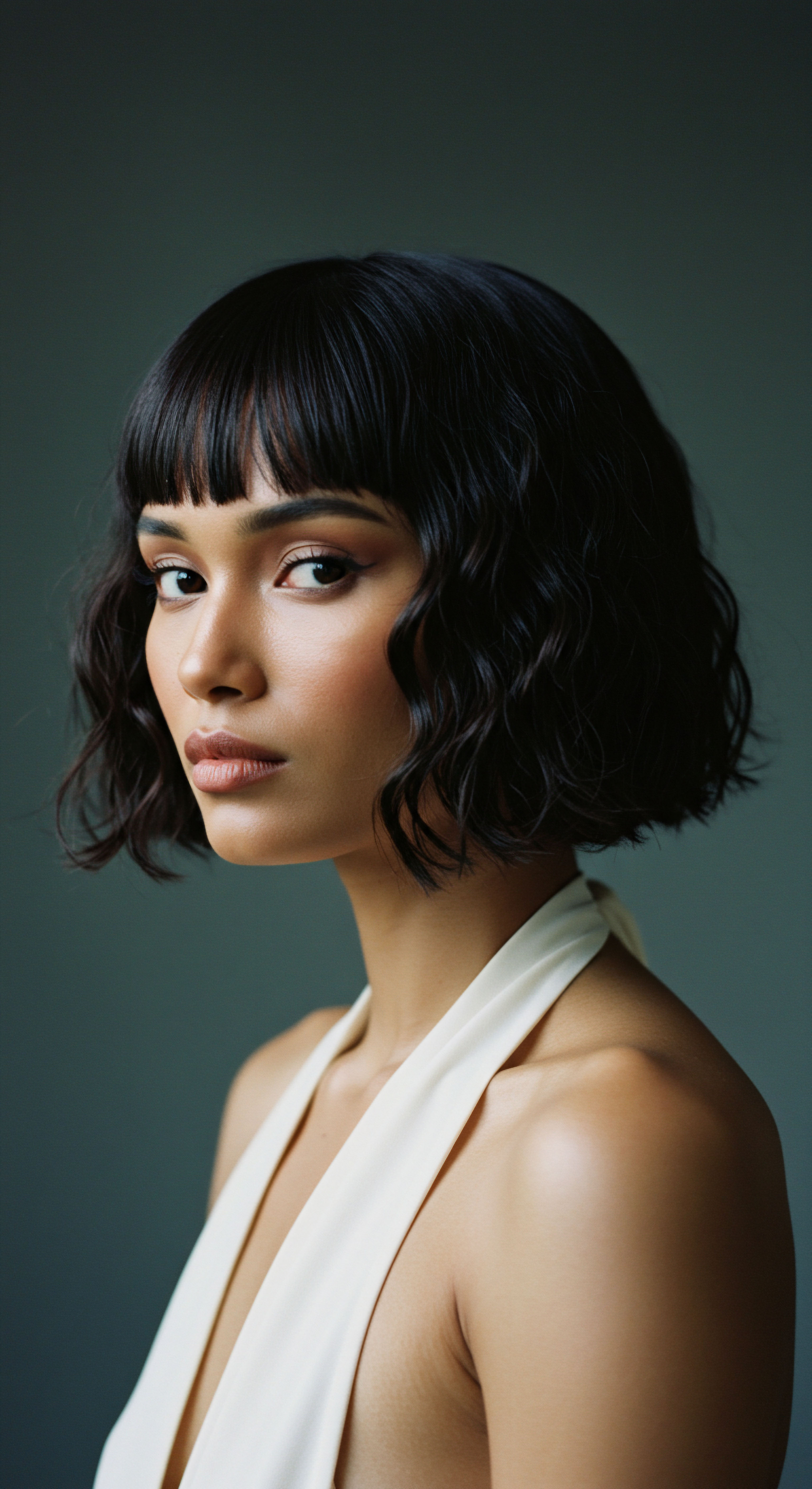
Relay
The journey of protecting textured hair overnight extends beyond simple practices; it is a profound cultural relay, a passing of wisdom that interconnects generations and continents. The deep-seated understanding of hair’s delicate nature, often perceived as a living entity, has given rise to sophisticated traditional methods that are now finding affirmation in contemporary scientific inquiry. This is not merely about preserving a hairstyle; it is about safeguarding a legacy, a personal narrative that intertwines with broader cultural identities.
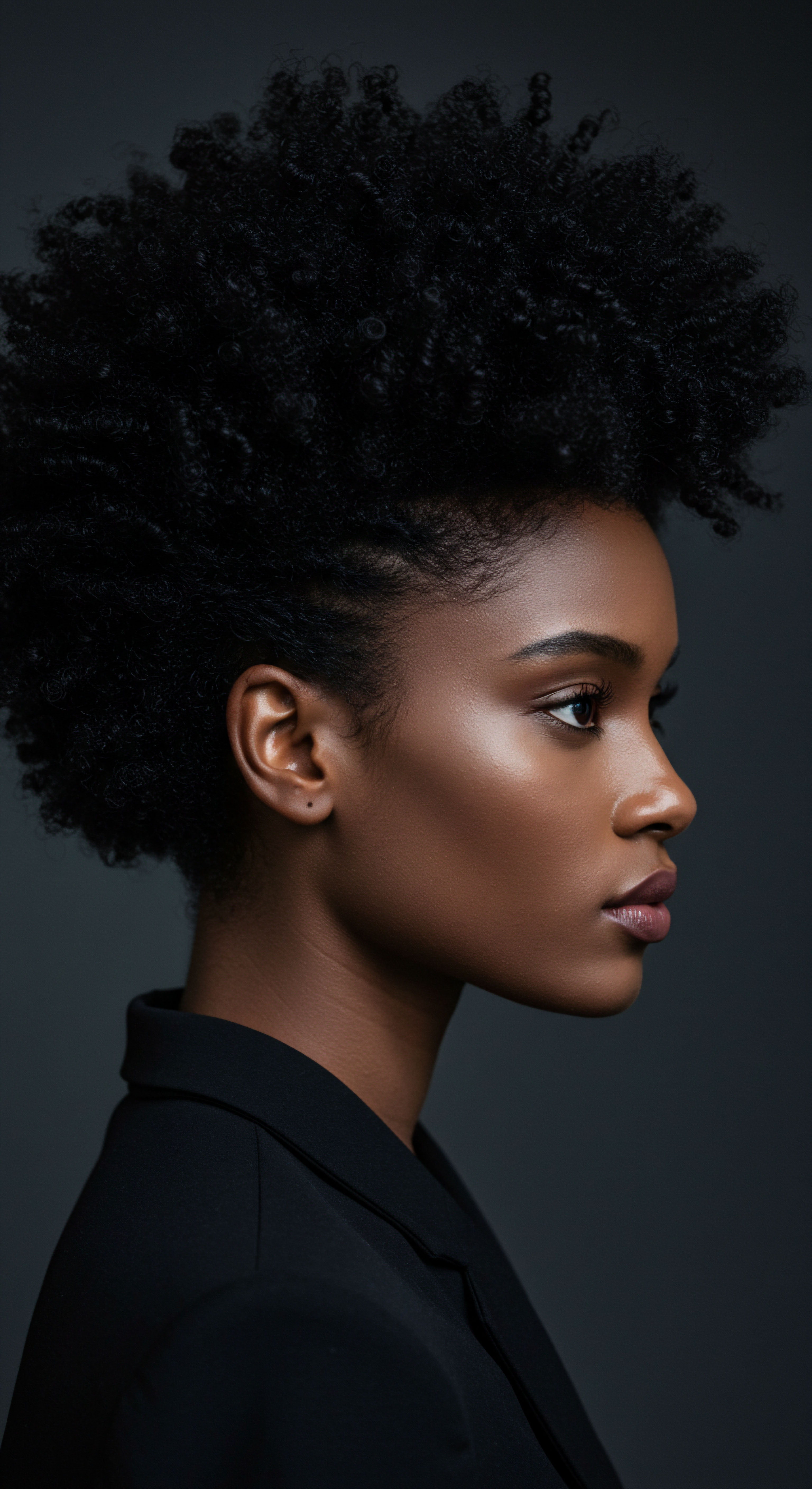
How Do Cultural Traditions Inform Modern Hair Science?
The enduring efficacy of traditional hair care practices, particularly those related to overnight protection, provides a compelling testament to centuries of accumulated knowledge. These methods, often dismissed as anecdotal, are increasingly finding validation within modern scientific understanding of hair biology. For instance, the long-held practice of wrapping hair in smooth fabrics or utilizing protective styles directly addresses the biomechanical vulnerabilities of textured strands. Scientific studies on friction and tensile strength confirm that minimizing external stress on the hair shaft, especially during periods of prolonged contact like sleep, significantly reduces breakage and cuticle damage.
Consider the widespread traditional use of oils in various cultures for hair care, often applied before bedtime. In Ayurvedic practices from India, herbal-infused oils like amla and brahmi have been massaged into the hair and scalp for centuries, believed to nourish and promote growth. Similarly, in many African tribes, shea butter has been a staple for moisturizing and shielding hair from harsh conditions. From a scientific perspective, these oils create a hydrophobic barrier on the hair surface, sealing in moisture and reducing its escape overnight.
They also act as lubricants, further diminishing friction between hair strands and bedding materials. This traditional knowledge, honed through generations of observation, aligns perfectly with modern cosmetic chemistry’s understanding of emollients and occlusives in hair product formulations.
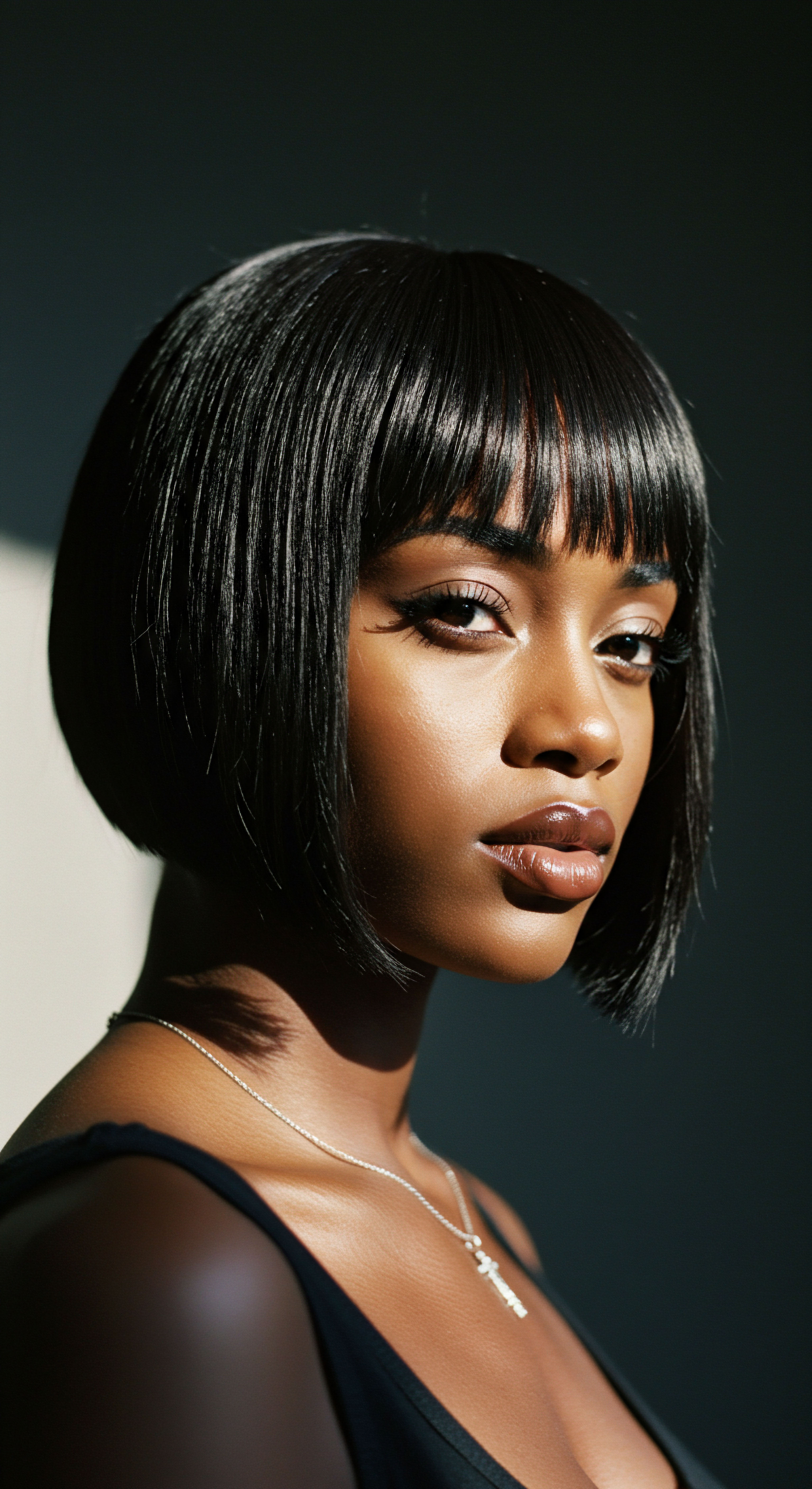
What is the Role of Scalp Health in Overnight Care?
Beyond the hair strands themselves, the scalp, the very ground from which our hair grows, requires diligent attention, especially during the nightly hours. Traditional practices often emphasized scalp care as an integral part of overall hair health. Scalp massages, common in Ayurvedic traditions, were performed with oils to stimulate blood flow and provide a sense of relaxation. This approach is supported by modern understanding ❉ a healthy scalp environment is fundamental for robust hair growth.
The scalp’s skin barrier, much like the skin on our face, can be disrupted by environmental factors, harsh products, or even stress. When this barrier is compromised, it can lead to issues such as dryness, flakiness, or irritation. While contemporary products like overnight scalp barrier serums aim to strengthen this function by balancing oil, hydration, and microflora, the underlying principle of nurturing the scalp during its regenerative period at night is a traditional concept. The quiet hours of sleep allow the scalp to rest and repair, and protective measures that reduce friction and maintain a balanced environment contribute significantly to this restorative process.
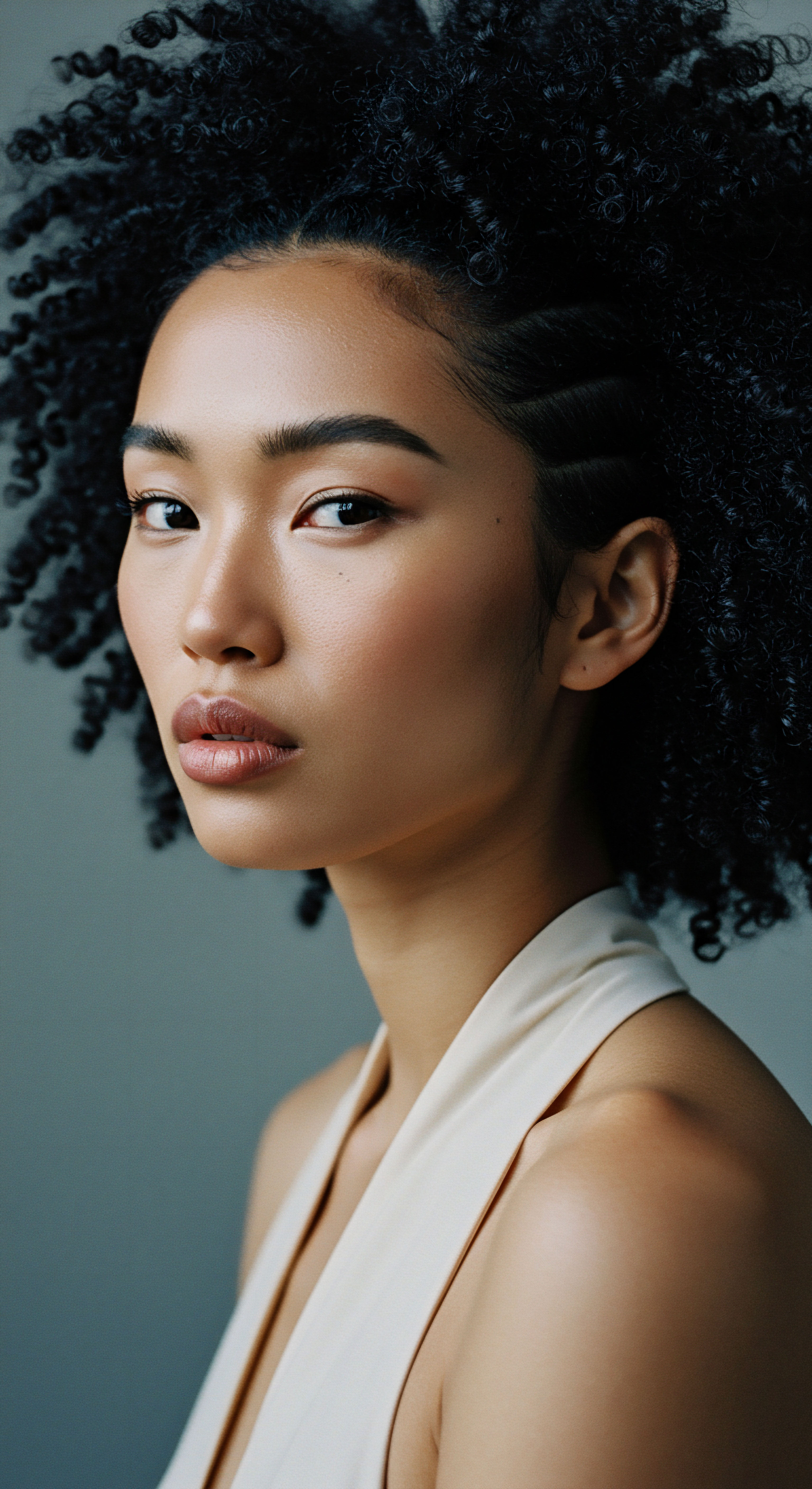
Do Pillowcase Materials Affect Hair Protein Integrity?
The debate between cotton and silk pillowcases for hair health is not merely about superficial frizz; it touches upon the very protein structure of the hair. Hair is primarily composed of keratin, a fibrous protein. When hair experiences friction, particularly against rough surfaces like cotton, the constant rubbing can lead to the lifting and abrasion of the cuticle scales, the outermost protective layer of the hair shaft. This mechanical damage can expose the inner cortex, making the hair more vulnerable to protein loss.
A study published in the Journal of Cosmetic Science by Robbins and Crawford (1990) examined the surface damage to hair fibers caused by various fabrics. While their focus was on fabric conditioners, their findings on mechanical abrasion are relevant. They demonstrated that different fabric surfaces interact with hair fibers at varying levels of friction, leading to distinct patterns of cuticle damage. Though direct studies on protein loss from overnight friction are less common, the established link between cuticle damage and compromised protein integrity suggests a clear impact.
When the cuticle is roughened or stripped away by friction, the hair’s internal protein structure becomes more exposed and susceptible to environmental stressors and further degradation. Silk, with its smooth surface, minimizes this abrasive action, allowing the hair to glide rather than snag, thereby preserving the cuticle and, by extension, the hair’s inherent protein.
The impact of sleep surfaces extends to hair’s protein integrity, where smooth materials like silk demonstrably reduce cuticle abrasion and subsequent protein vulnerability.
This scientific backing for what was once traditional practice reinforces the value of silk and satin. It is not just about comfort or aesthetic appeal; it is about a quantifiable reduction in the physical stress endured by hair strands during the nocturnal hours. The traditional choice of these smooth fabrics, whether for bonnets, scarves, or pillowcases, reflects an intuitive understanding of hair’s fragility and the need for gentle handling, particularly for textured hair, which already faces structural challenges.
The interplay of traditional methods and scientific insight highlights a shared wisdom ❉ the protection of textured hair overnight is a holistic endeavor. It requires not only thoughtful styling but also a careful consideration of the materials that touch our strands as we rest, ensuring that the hair’s intricate architecture and its delicate protein balance are maintained. This comprehensive approach, passed down through generations and now affirmed by research, offers a path to truly thriving hair.
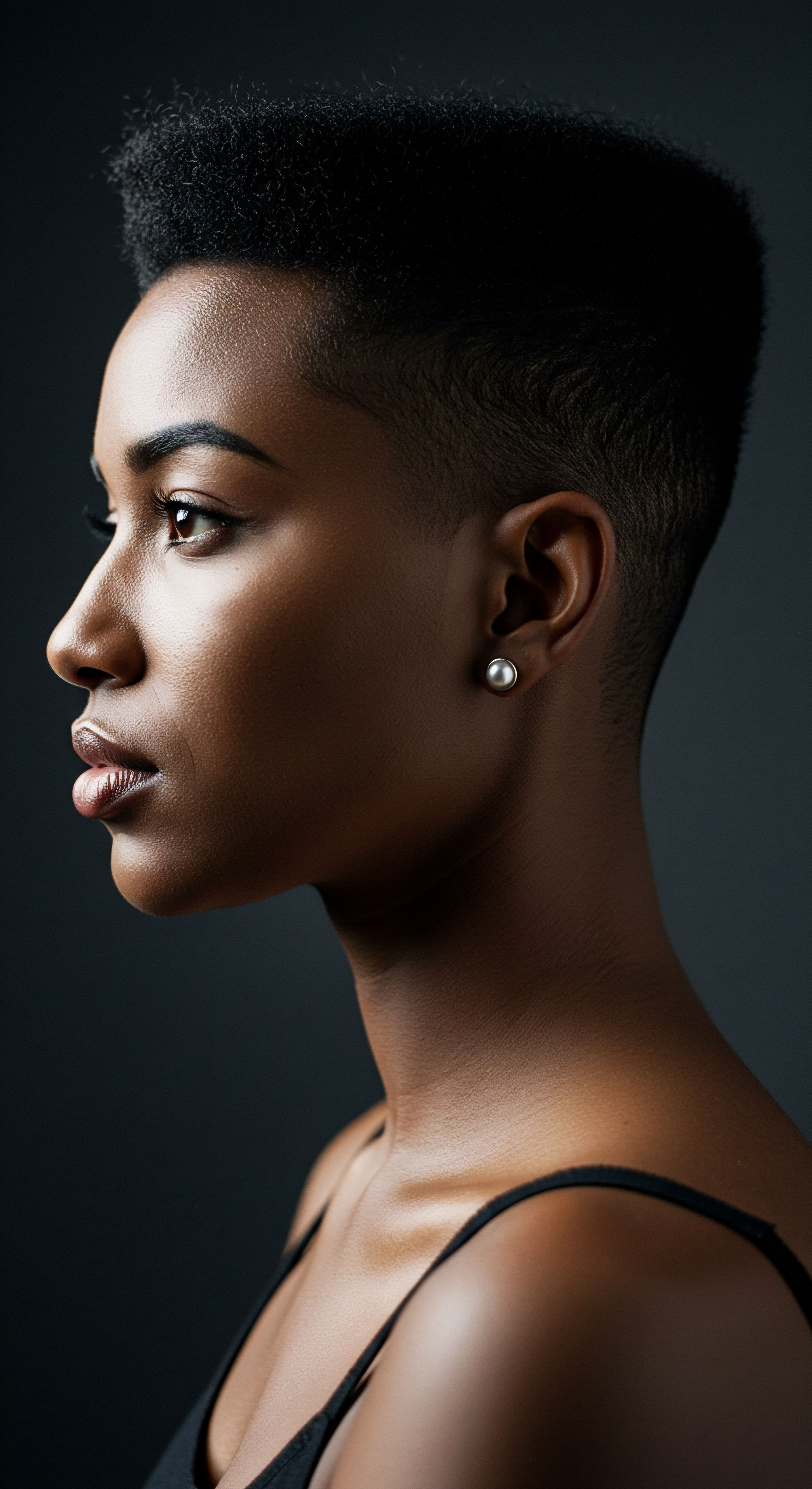
Reflection
As the quiet hum of the night descends, the legacy of hair care, stretching back through generations, finds its contemporary expression. The traditional methods of protecting textured hair overnight are not simply historical curiosities; they are living testaments to an enduring wisdom, a deep understanding of hair’s inherent needs. From the purposeful placement of braids and twists to the comforting embrace of silk and satin, these practices speak to a universal desire to preserve and honor our crowning glory. They remind us that care is often found in gentle, consistent acts, acts that resonate with the rhythm of rest and renewal.
The interplay of ancestral knowledge and modern scientific inquiry offers a rich tapestry of understanding, inviting us to look beyond fleeting trends and rediscover the profound simplicity and effectiveness of time-honored rituals. In these quiet nightly moments, as we prepare our hair for slumber, we connect with a heritage of care, ensuring our strands not only survive but truly flourish.
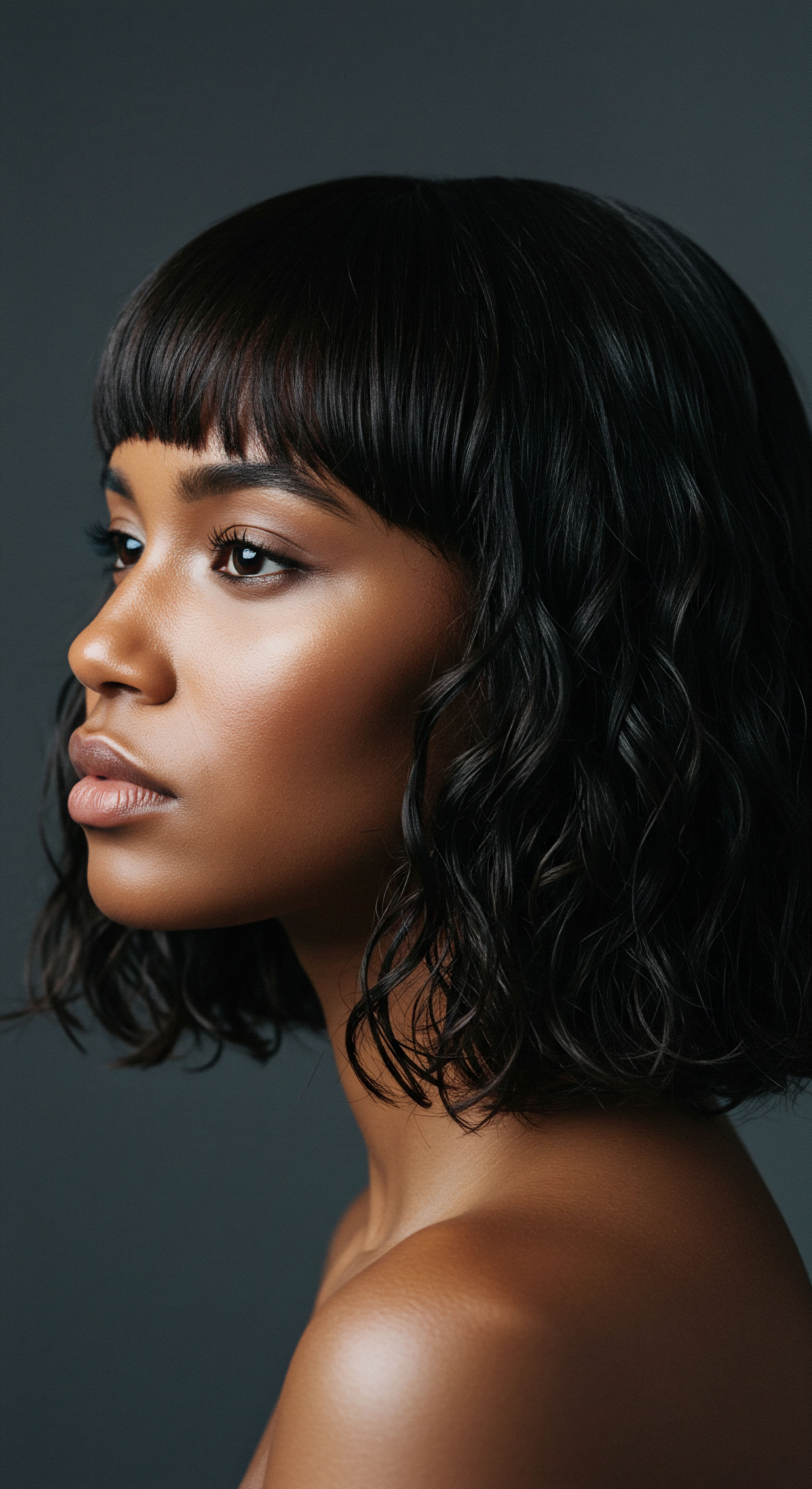
References
- Robbins, C. R. & Crawford, D. J. (1990). The effect of fabric softeners on the friction and mechanical properties of hair. Journal of Cosmetic Science, 41(2), 107-123.
- Sherrow, V. (2023). Encyclopedia of Hair ❉ A Cultural History. Greenwood Press.
- Jacobs-Huey, L. (2006). From the Kitchen to the Parlor ❉ Language and Becoming in African American Women’s Hair Care. Oxford University Press.
- Leach, E. R. (1958). Magical Hair. Journal of the Royal Anthropological Institute of Great Britain and Ireland, 88(2), 147-164.
- Synnott, A. (1987). Shame and Glory ❉ A Sociology of Hair. British Journal of Sociology, 38(3), 381-413.
- Delaney, C. (1994). Untangling the Meanings of Hair in Turkish Society. Anthropological Quarterly, 67(4), 159-172.
- Ford, K. et al. (2016). Black Hair ❉ A Cultural History. Thames & Hudson.
- Sleeman, M. (2014). Medieval Hair Tokens. Forum for Modern Language Studies, 17(1), 22-35.